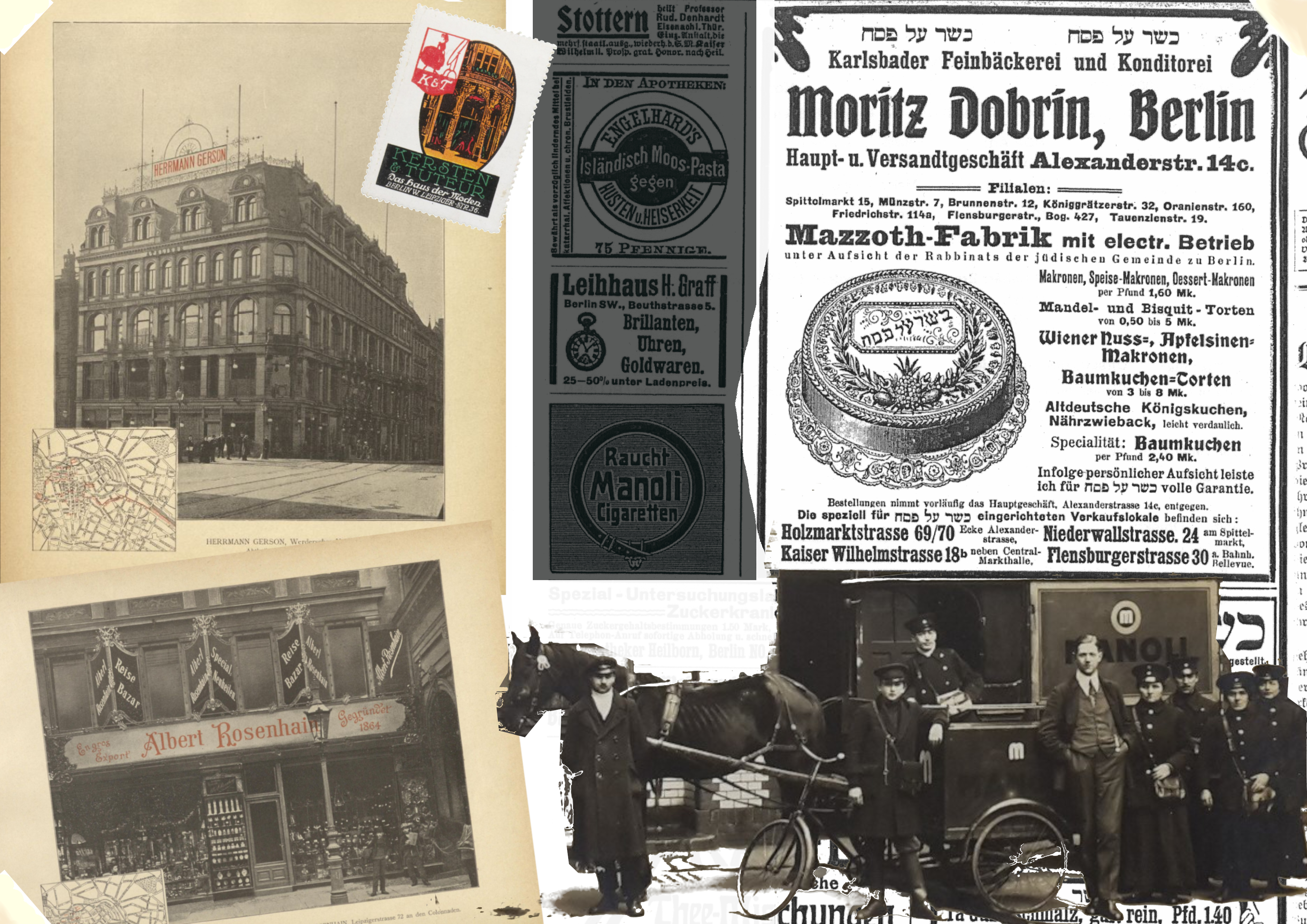Until the end of the German Empire in 1918, the area of Berlin now known as Mitte was the capital’s central business district. It was only after the First World War and with the expansion of the city’s borders into Greater Berlin, in 1920, that a second, booming commercial center emerged in western Berlin around Tauentzienstrasse and Kurfürstendamm.
This history is also reflected in the geographies of where the city’s Jewish residents lived, spent their time, and made their mark. These include sites and buildings affiliated with the official Jewish community (Gemeinde), such as synagogues, schools – e.g. the Jewish community’s Orthodox Synagogue and Girl’s Secondary School on Kaiserstrasse – and cemeteries. But they also include organizations or stores that often operated for many decades. Their customers were Berliners and tourists, Jews and non-Jews alike.
Some stores sold products for a specifically Jewish clientèle, such as ritual objects, Hebrew books, or kosher products, either exclusively or alongside other wares. The district was also home to associations, such as the Soncino Society, committed to the preservation and cultivation of Jewish book culture, as well as Jewish publishing houses, such as M. Poppelauer, which printed religious literature among other books. Other businesses’ products were religiously neutral. One example is the garment industry, a business traditionally popular with Jewish merchants ranging from retailers such as the Albert Rosenhain luxury and leather goods shop on Leipziger Strasse; to factories, such as the Müller and Süssmann linens factory; to giant department stores such as the Gerson textile department store on Werderscher Markt and the famous Tuteur fashion house.
Jewish workers and businesspeople were present in other industries as well. One example is the Manoli cigarette factory. The business owners’ Jewishness was as varied as it was in the city at large, with its variety of movements and manifestations, and in many cases these affiliations are lost to time. Almost all businesses with Jewish owners were either sold under duress and “Aryanized” or, if this had not yet occurred, destroyed during the nightlong pogroms of 10 and 11 November 1938, then “liquidated.” In 1935, the Berlin textile wholesaler Martin Friedländer protested publicly against these racist laws.
The collections of the Jewish Museum Berlin include many objects from many places of Berlin’s Jewish story. Many of these were donated by members of families that emigrated. This thematic feature was inspired by a discovery from 2020: the remains of the Moritz Dobrin bakery, unearthed at a construction site near Alexanderplatz. The JMB documented the archeological excavation on film (in German). It is amazing to see!
